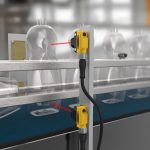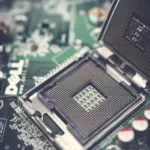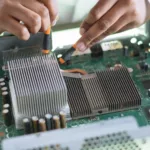
Introduction
Electrostatic discharge (ESD) and electrical overstress (EOS) are two critical phenomena in the field of electronics and electrical engineering–causing significant damage to electronic components and systems. These events can have profound impacts, leading to malfunctions, reduced reliability, and increased maintenance costs. Therefore, understanding the causes, effects, and prevention of these phenomena is vital for ensuring the reliability and longevity of electronic devices. This article addresses the basics of ESD and EOS, their causes, effects, prevention methods, and their importance in today’s technology-driven world.
Importance of ESD and EOS Awareness
In today’s technology-driven world, electronic devices are pervasive – and their reliability is paramount. ESD and EOS events can disrupt critical industrial operations, which necessitate their prevention in various industries, including:
- Consumer Electronics: ESD and EOS protection is essential to ensure the reliability and longevity of smartphones, laptops, and other consumer devices.
- Aerospace and Defense: Critical electronic systems in aircraft, satellites, and military equipment must be safeguarded against ESD and EOS to prevent catastrophic failures.
- Medical Devices: Medical equipment relies on electronic components for diagnostics and treatment, making ESD and EOS protection vital for patient safety.
- Industrial Automation: In industrial settings, electronic control systems and sensors must be protected to avoid costly downtime and production interruptions.
Understanding ElectroStatic Discharge: Identifying Its Causative Factors
ESD refers to the sudden or momentary flow of electricity between two electrically charged objects, occurring when there is a difference in electrical potential between them. ESD causes a rapid discharge of energy and can happen between various materials, leading to long-term reliability issues or immediate failure. ESD can be caused by several factors, including:
- Human Interaction: The simple act of touching an electronic component can transfer an electric charge from a person to the device, potentially causing ESD.
- Triboelectric Charging: When two materials contact each other and separate, they generate static electricity due to friction. This can also lead to ESD if the charged materials touch an electronic component.
- Device Sensitivity: Different electronic components have varying degrees of sensitivity to ESD. Integrated circuits, microprocessors, and memory chips are particularly susceptible to ESD damage.
- Environmental Factors: Dry, low-humidity environments are more conducive to ESD, allowing the buildup of static charges on surfaces.
Effects of ESD: Exploring the Consequences
The effects of ESD can range from subtle performance degradation to complete component failure. Some common consequences include:
- Reduced Reliability: ElectroStatic Discharge events can weaken or damage electronic components, leading to decreased product reliability and a shorter lifespan.
- Data Corruption: ESD can corrupt data stored in electronic memory, causing data loss or errors.
- Increased Maintenance Costs: Frequent ESD incidents can lead to higher maintenance costs due to the need for component replacements or repairs.
Understanding Electrical Overstress: Unveiling Its Main Causes
Electrical overstress occurs when an electronic component or circuit is subjected to electrical voltage or current levels beyond its designed limits or ratings–damaging the components in terms of failure or reduced performance. EOS can result from various factors, including:
- Voltage Spikes: Rapid voltage spikes or transients in the power supply can exceed the component’s voltage tolerance.
- Current Surges: An excessive current flowing through a component can cause it to overheat and fail.
- Incorrect Handling: Mishandling electronic components, such as faulty connections or soldering, can lead to EOS.
Unleashing the Adverse Effects of EOS
The consequences of EOS can be severe, ranging from permanent damage and increased heat generation to increased cost and signal degradation. Some of the common adverse effects of EOS include:
- Component Failure: EOS can cause immediate or gradual component failure, rendering the electronic device inoperable.
- Reduced Performance: Even if EOS does not cause immediate failure, it can degrade the performance of electronic components over time.
- Safety Risks: In some cases, EOS can result in safety hazards, such as fires or electrical shocks.
ESD and EOS Can Be Prevented: Exploring Potential Measures
To prevent ESD, various measures can be taken, including:
- Grounding: Proper grounding of personnel and equipment can dissipate static charges, reducing the risk of ESD.
- ESD Protection Devices: Employing ESD protection devices, such as anti-static mats, wrist straps, and conductive bags, can mitigate ESD during handling and storage.
- ESD-Safe Work Environments: Creating ESD-safe work environments with controlled humidity levels can minimise the likelihood of ESD incidents.
Preventing EOS involves several strategies:
- Surge Protection: Installing surge protectors and transient voltage suppressors can safeguard electronic devices from voltage spikes and transients.
- Component Selection: Choosing electronic components with higher voltage and current tolerances can increase resilience against EOS events.
- Proper Design and Testing: Designing circuits with appropriate safety margins and subjecting them to rigorous testing can help identify and prevent potential EOS vulnerabilities.
Bottom Lines and Recommendations
Electrostatic discharge and electrical overstress are the major concerns that lead to damage or malfunction of multiple electronic devices. By implementing proper ESD and EOS precautions, engineers, technicians, and industries can protect their investments and reduce the risk of costly failures. With further technological advancements, the need for ESD and EOS awareness and prevention becomes increasingly critical to maintain the integrity of electronic components and the functionality of modern society.





















